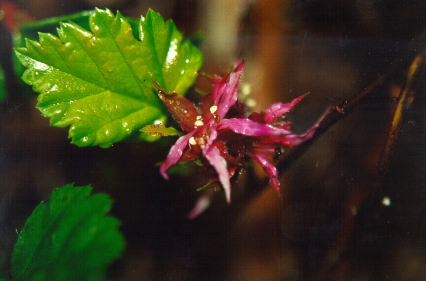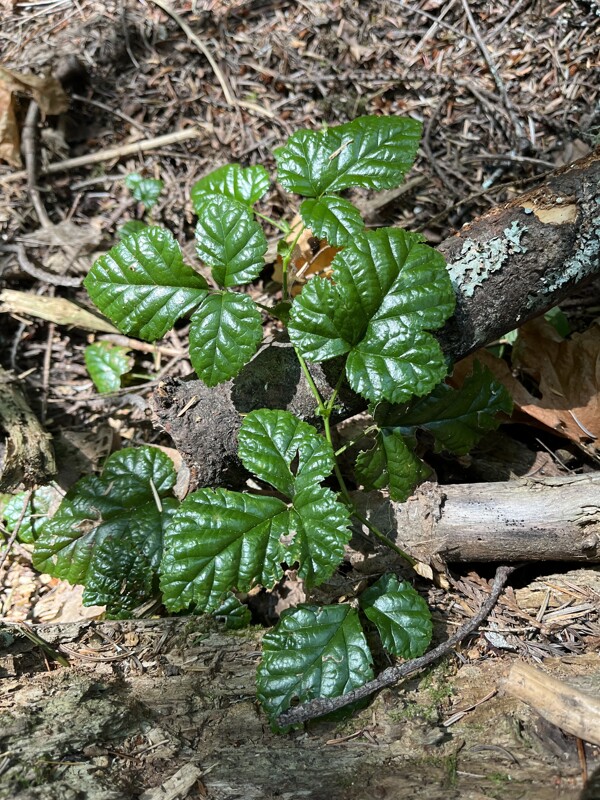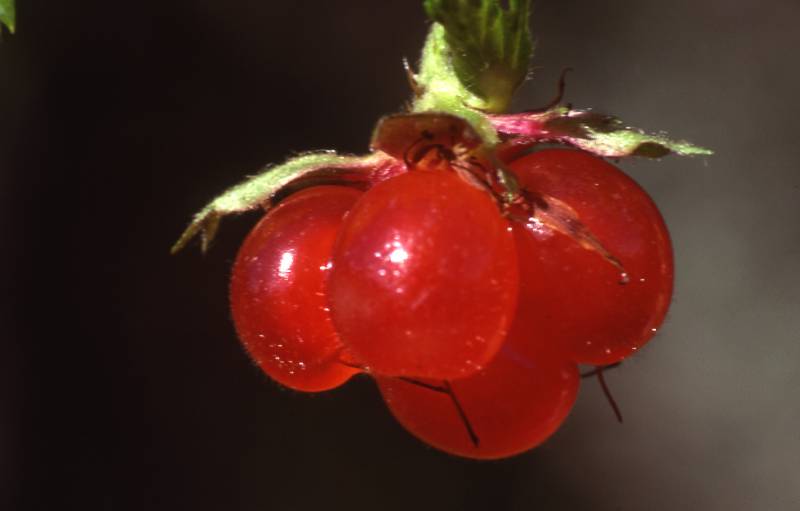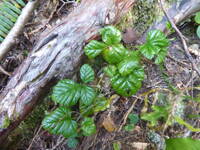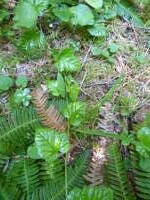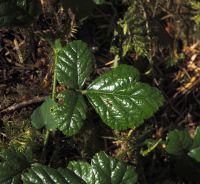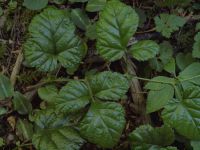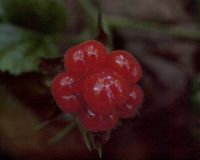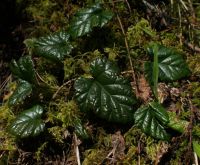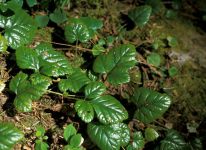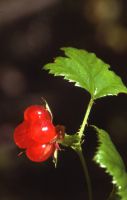Distribution: Occurring west of the Cascades crest in Washington; British Columbia to southwest Oregon, also in west-central Idaho.
Habitat: Open to deeply shaded, usually moist areas in the mountains at middle elevations.
Flowers: June-July
Origin: Native
Growth Duration: Perennial
Conservation Status: Not of concern
Pollination: Apomixis, bumblebees, bees, beetles
Trailing perennial with freely-rooting, slender, pubescent and retrorsely-prickly stems up to 2 m. long.
Leaf blades 3-6 cm. long, bright green and shining, glabrous, mostly simple, cordate-ovate, to 3-lobed, the margins dentate-serrate; petioles with curved prickles.
Flowers single or in pairs in the leaf axils; calyx lobes 5, ovate-lanceolate, pointed, 6-9 mm. long, reflexed, usually purplish; petals inconspicuous, pink to dull purple, narrowly elliptic, somewhat longer than the sepals; stamens about 15, filaments slender, purplish; pistils 4-9, pubescent.
Drupelets large, red; seeds 3-4 mm. long, wrinkled.
Publication: Fl. Bor.-Amer. 1: 181. 1832.
PNW Herbaria: Specimen records of Rubus nivalis in the Consortium of Pacific Northwest Herbaria database
WA Flora Checklist: Rubus nivalis checklist entry
OregonFlora: Rubus nivalis information
E-Flora BC: Rubus nivalis atlas page
CalPhotos: Rubus nivalis photos

